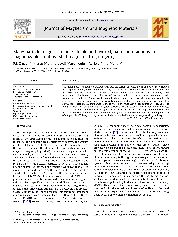摘要
The implant assisted magnetic targeted drug delivery system of Aviles, Ebner and Ritter is considered both experimentally (in vitro) and theoretically. The results of a 2D mathematical model are compared with 3D experimental results for a magnetizable wire stent. In this experiment a ferromagnetic, coiled wire stent is implanted to aid collection of particles which consist of single domain magnetic nanoparticles (radius approximate to 10 nm). In order to model the agglomeration of particles known to occur in this system, the magnetic dipole-dipole and hydrodynamic interactions for multiple particles are included. Simulations based on this mathematical model were performed using open source C++ code. Different initial positions are considered and the system performance is assessed in terms of collection efficiency. The results of this model show closer agreement with the measured in vitro experimental results and with the literature. The implications in nanotechnology and nanomedicine are based on the prediction of the particle efficiency, in conjunction with the magnetizable stent, for targeted drug delivery.
- 出版日期2010-8
